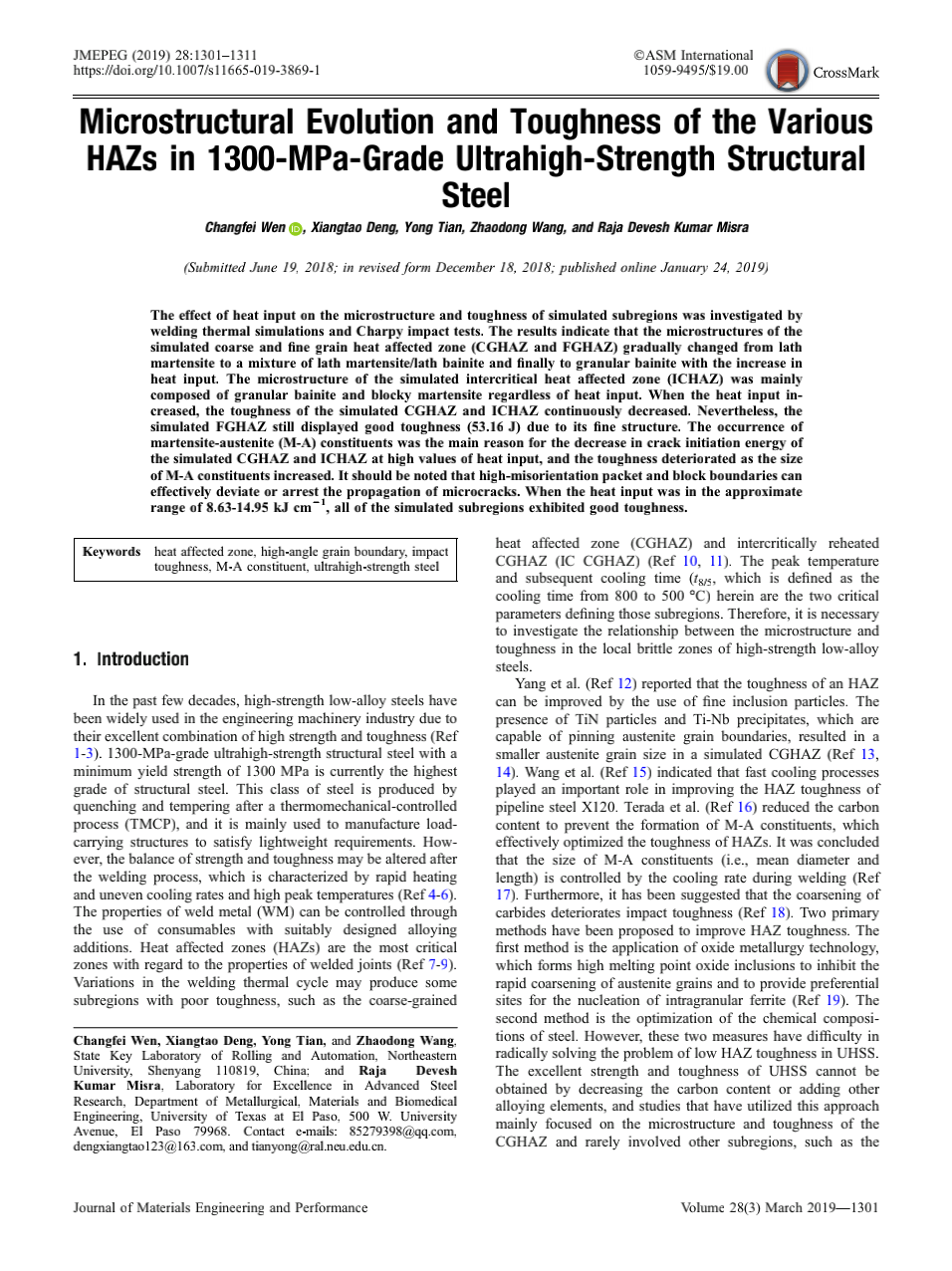名称 : Microstructural Evolution and Toughness of the Various HAZs in 1300-MPa-Grade Ultrahigh-Strength Structural Steel
发表日期 : 2019-01-24
摘要 : The effect of heat input on the microstructure and toughness of simulated subregions was investigated by welding thermal simulations and Charpy impact tests. The results indicate that the microstructures of the simulated coarse and fine grain heat affected zone (CGHAZ and FGHAZ) gradually changed from lath martensite to a mixture of lath martensite/lath bainite and finally to granular bainite with the increase in heat input. The microstructure of the simulated intercritical heat affected zone (ICHAZ) was mainly composed of granular bainite and blocky martensite regardless of heat input. When the heat input increased, the toughness of the simulated CGHAZ and ICHAZ continuously decreased. Nevertheless, the simulated FGHAZ still displayed good toughness (53.16 J) due to its fine structure. The occurrence of martensite-austenite (M-A) constituents was the main reason for the decrease in crack initiation energy of the simulated CGHAZ and ICHAZ at high values of heat input, and the toughness deteriorated as the size of M-A constituents increased. It should be noted that high-misorientation packet and block boundaries can effectively deviate or arrest the propagation of microcracks. When the heat input was in the approximate range of 8.63-14.95 kJ cm−1, all of the simulated subregions exhibited good toughness.
网址 : https://doi.org/10.1007/s11665-019-3869-1
领域 : 海洋工程用钢
出版公司 : Springer Nature
出版国家 : CH
重点项目名称 : 高强度、大规格、易焊接海洋工程用钢及应用-高强度海洋工程用钢特厚钢板强韧化机理及性能均匀性控制技术数据集






















